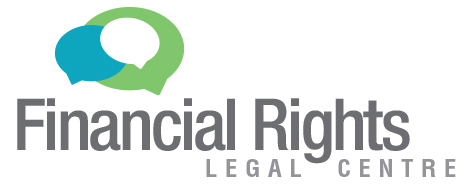This fact sheet is for information only. You should get professional advice about your personal situation from a financial counsellor or a lawyer.
Main ideas
• If you put your asset, such as a house or car, as security against a loan for personal purposes, the lender (such as a bank, finance company or car dealer) can take it if you don’t keep to the loan conditions, for example, if you miss payments.
• There are rules lenders must obey when they repossess assets.
• You can still owe the lender money even after they repossess your asset.
• If you are struggling to meet your loan repayments, try to negotiate with the lender before they repossess.
• You can get help from a free financial counsellor.
In this fact sheet:
Personal loans vs business loans
Goods taken as security for a loan
The repossession process
1. You default on your loan
2. The lender sends you a default notice
3. The lender takes the goods
4. The lender sells the goods
5. You pay the remainder of the loan
Personal loans vs business loans
This fact sheet only applies to loans for personal purposes that are covered by the credit law. If you are unsure whether the credit law applies read our fact sheet on the National Credit Act.
Business loans do not have the protections discussed in this fact sheet. Some warning signs you may have been signed up to a business loan are:
- you were asked to sign up to an ABN or provide business details as part of the loan process
- your loan says ‘chattel mortgage’
- you gave security over household items like your fridge or TV which you already owned (that is, you didn’t buy them using the loan).
If you think you shouldn’t have been put into a business loan, get legal advice immediately.
Goods taken as security for a loan
When you buy goods on credit, (for example, a car) the money loaned to you may be secured by a mortgage over the goods. This allows the lender to take the goods from you and sell them if you default in paying the loan. It is a criminal offence to sell or get rid of secured goods without permission from the lender or the court.
Goods taken as security can be repossessed if:
- there is a mortgage and
- you have ‘defaulted’ on the loan agreement and
- you have been given a notice by the lender (required in most cases) that you are in default of the loan, and have 30 days to fix the problem and
- you did not fix the problem within that time (usually by getting the loan up to date, including paying any fees and any regular repayments).
The repossession process
1. You default on your loan
Goods can only be repossessed if you have defaulted on your loan. This means you have not complied with the loan agreement in some way.
The most common way to default on a loan is by not making a repayment on time. But you can default in other ways, for example, by not keeping the goods insured if the loan agreement requires you to do so.
The best way to avoid a default is to contact the lender early, and before you start missing payments. Explain you are in financial hardship and negotiate a payment plan. Read our Financial Hardship fact sheet. Also read our Credit Reports fact sheet for information on how hardship is recorded on your credit file.
2. The lender sends you a default notice
Do not ignore a default notice – act immediately. You have at least 30 days from the date of the notice to pay any arrears owing (the amount you are behind on repayments). You must also meet your normal repayments.
The best option, if you can do it, is to pay the arrears and your usual repayment within the time given in the default notice. The loan returns to normal and the lender cannot take any further action.
If you cannot pay the whole amount claimed in the default notice and your usual repayments:
- Contact the lender immediately. Explain you are in financial hardship. Read our Financial Hardship fact sheet. Also read our Credit Reports fact sheet for information on how hardship is recorded on your credit file.
- Try to negotiate a repayment arrangement with the lender before the default notice expires. If the lender agrees to a repayment arrangement, get it in writing. This will stop any further action.
- Keep paying what you can afford to pay.
- Make an appointment with a free financial counsellor.
If the lender will not agree to a repayment arrangement, complain to the Australian Financial Complaints Authority (AFCA) scheme immediately. AFCA is a free and independent complaints service. Lodging a dispute is free and will stop all legal and repossession action. The lender cannot repossess your goods until your dispute has been considered or your file closed. Read our Financial Complaints to AFCA fact sheet.
While AFCA investigates your complaint, you can try to negotiate a repayment arrangement with the lender to put the loan back in order. If you cannot catch up, get legal advice.
If you want to keep the goods, keep paying whatever you can into the loan while AFCA investigates (but be realistic about whether it’s likely you’ll get to keep the goods – get advice).
If you do not pay the arrears in the default notice and don’t negotiate a repayment arrangement, then the lender can do any combination of:
- Accelerate the debt. The whole debt will be owing, not just the arrears.
- Repossess the goods you mortgaged.
- Start court proceedings.
- List a default on your credit report 60 days from the date of the default. The lender usually uses the default notice to notify you that they may list a default on your credit report. Read our fact sheet about Credit Reports.
If you have not received a default notice, but you have been threatened with repossession – get legal advice immediately – especially if you’re worried you may have a business loan but the loan was for personal or domestic purposes.
There are some rare situations where a default notice isn’t required, including:
- the lender has reasonable grounds to think you have or will get rid of the goods
- the lender has reasonable grounds to suspect fraud
- the lender can’t locate you after reasonable attempts
- you are insolvent (bankrupt).
3. The lender takes the goods
If the lender writes to you asking for the location of the goods/car, you must, within 7 days, tell the lender where the goods are. If they are not in your possession, give the lender all the information you have that could help to find the goods/car.
The lender does not, however, have the right to enter private property to repossess a car or other goods without your written consent or a court order. If they try to repossess, explain that they cannot repossess without a court order. Show them this fact sheet.
If the lender is threatening to repossess straight away (or a repo agent is looking for you):
- park the car on private property in a garage until you have lodged a dispute with AFCA
- lodge a dispute with AFCA immediately
- contact the lender to negotiate a repayment arrangement. Let the lender know you have lodged with AFCA.
The lender must have a court order to repossess property if:
- the mortgaged goods are on private property, and you have not agreed in writing to the lender entering that property to take the goods, or
-
the amount owing on the loan is less than 25% of the original loan, for loans under $40,000. For loans over $40,000, the amount owing must be less than $10,000. This doesn’t apply if your contract is a credit card or line of credit, or if the lender has reasonable grounds to think you have or will get rid of the goods.
If you agree to the repossession:
- take lots of pictures of the goods/car at different angles, before it is repossessed as proof of its condition
- get your personal possessions out of the car.
Check the value of goods/car that have been repossessed. For example, look in newspapers or online to see what cars of similar age and condition are being sold for. Check on the RedBook website.
4. The lender sells the goods
Within 14 days of the repossession of the car/goods, the lender must give you a written notice that states:
- the date the goods were taken
- the estimated value of the goods
- the enforcement expenses incurred to date and any other enforcement expenses accruing (such as the daily storage rate for the car)
- your rights
- that the lender cannot sell the goods until 21 days after the date of the notice.
If you pay the amount of the arrears, the enforcement expenses and your normal repayment (if it is due during the notice period), the lender must return the goods to you.
If the enforcement expenses claimed seem too high, check your contract and get legal advice.
If you can get back on track but cannot pay the amounts required within the 21 days, you can apply for a hardship variation. Read our Financial Hardship fact sheet. Lodge a complaint with AFCA urgently. If the goods/car has not yet been sold, the lender cannot sell until AFCA has considered your complaint.
If you do not pay in full or agree a hardship variation within 21 days or lodge in AFCA, the lender must sell the goods as soon as possible for the best price reasonably obtainable.
If you have someone interested in buying the goods at the estimated value (or any higher written offer the lender has), you can introduce the person in writing to the lender within those 21 days, and the lender must sell it to them.
5. You pay the remainder of the loan
Once the goods are sold, the lender must send you a notice that states:
- the amount the goods sold for
- the net proceeds of the sale (the amount the goods sold for less the lender’s expenses for arranging the sale)
- the amount required to pay out the loan
- any further recovery action to be taken by the lender against you.
Once the goods have been sold, the remainder of the loan is due immediately. Ask for hardship if you need time to pay it off
If you think:
- the lender did not sell the goods in a timely way or
- the lender did not sell for the best price reasonably obtainable, or
- the enforcement expenses added to the loan are unreasonable, or
- you need a payment arrangement for the remainder of the loan
you can complain to AFCA. You will need evidence to support your complaint. You will not get the goods back!
Need more help?
Check our Financial Hardship fact sheet and Financial Complaints to AFCA fact sheet.
For a list of other resources, visit our Useful Links page.
Last updated: January 2025

